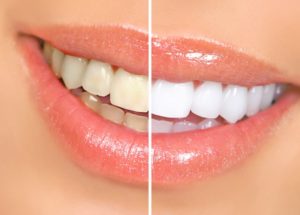
Did you know that 80% of people surveyed want whiter teeth? A brighter smile appears cleaner and healthier. Scientists have even speculated that having luminous teeth is viewed as a sign of good genetics, which can be attractive to potential mates. When your grin is sparkling, it projects confidence, warmth, and vitality. These factors have been a driving force since ancient times! Read on to learn about the history of teeth whitening and how you can achieve a dazzling smile now.
Ancient Beginnings
The ancient Egyptians have influenced modern times in areas such as inventions, math, sports, writing, and medicine. And you can add teeth whitening to the list, too! During this time, appearance was of utmost importance and Egyptians considered a bright smile to be a symbol of virility, wealth, and sensuous appeal.
To achieve white teeth, Egyptians created a paste using ground pumice stone, wine vinegar, and ground oxen hooves. As a matter of fact, they even used urine to keep their smile bright! Old documents report this shocking revelation; their reasoning was that urine contains ammonia, a natural bleaching agent.
Ancient Europeans were not too far from strange practices to try and get pearly “whites”. They were known to clean their teeth using acid. Though this may have visually restored their teeth, it also led to the destruction of the protective enamel.
The Progression of Teeth Whitening
As the centuries passed, people explored several different ways to achieve a luminous smile. They were aiming for it to be better and faster! Here’s how the practice evolved throughout history:
- 12th Century – During this time, pastes and powders were used. Physicians often suggested that people use various kinds, including sage and a salt rub.
- 17th Century – Unbelievably, people would visit their barber for dental needs. Their hair stylist would file teeth down to make them abrasive, then apply a powerful nitric acid to whiten them. While this technique was effective, it would severely damage enamel, ruining it permanently.
- 19th Century – At the beginning of this century, hydrogen peroxide and fluoride became an increasingly popular way to elevate the shades of teeth.
- 20th Century – This was a time when teeth whitening evolved a lot. In 1918, dentists found that using a combination of a heating lamp and hydrogen peroxide would accelerate the whitening process. By the 1960s, they discovered that allowing teeth to soak in peroxide overnight led to even brighter results.
Modern Teeth Whitening Treatment
By the 1980s, a type of whitening gel called opalescence carbamide peroxide was patented. It is still currently a widely used teeth whitening technique. Research and development have led to numerous products that facilitate the teeth whitening process. While you can use brightening toothpaste or strips, your dentist can offer professional teeth whitening that will last for a longer amount of time and can whiten your smile up to 8 shades! By providing you with custom trays and special whiting solutions, you can even do it at the convenience of your home. You could count on shiny pearly whites in two weeks.
Teeth whitening has come a long way since its early days—you now have more effective and long-lasting options than ever to brighten your smile!
About the Author
Dr. Leslie Metzger and her team at Monet Aesthetic Dentistry are eager to help you keep your smile healthy and bright! She provides a full range of dental services, including take-home teeth whitening that is custom fit to your personal goals and needs. With a focus on concierge-level service, Dr. Metzger wants the journey toward excellent oral health to be as comfortable as possible while also being effective. To schedule an appointment, contact her through her website or call (248) 476-3410.
